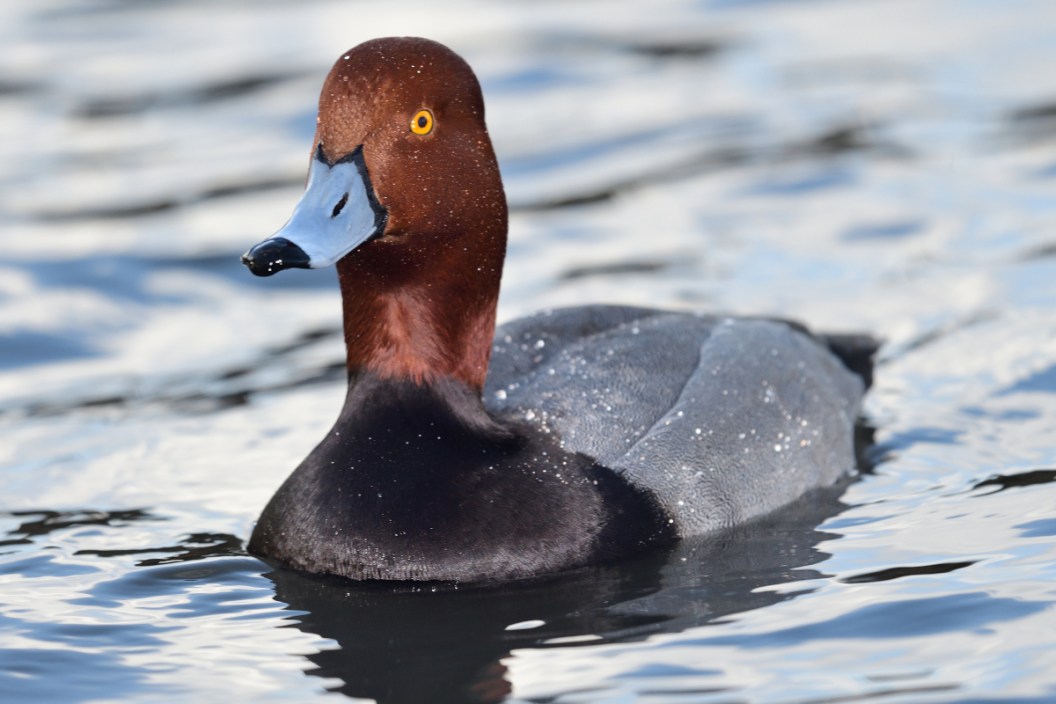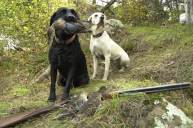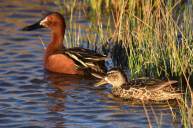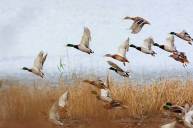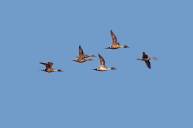The redhead duck is a hunter's favorite. Here's everything you need to know about this beautiful waterfowl.
Redheads can be found in virtually every flyway of North America making them a favorite of hunters and birding enthusiasts everywhere. They have some of the most beautiful plumage of any waterfowl out there, even in its simplicity of cinnamon red.
These diving ducks absolutely glow on the water when their feathers are ripe and in the full plumage winter, but it is in their numbers that makes them such a great target for waterfowlers everywhere. They can sometimes be seen overwintering in groups numbering in the thousands along the Gulf Coast, and summers find them nesting in the reedy ponds of the Great Plains and West.
The Aythya americana can be seen all over the country, all the way up into the Canadian prairie potholes and farther into the Alaskan frontier. For conservation minded hunters, redheads hold a least-concern status making them a great target to hunt with liberal bag limits. Remember, this is the duck species that has a whole line of hunting apparel named after it. When it comes to iconic, the redhead duck stands alone.
Identifying the Redhead
The adult male redhead (drake) is roughly the same size and shape as a mallard, with a rounded head and similar body style. One big difference is their steeper forehead which meets the bill at a sharper angle, and as the Cornell Lab's All About Birds tells us that they have a beautiful "Cinnamon-red head, black chest and rear, and gray body. Bill is gray with a black tip." They look a bit taller than a mallard in the water, and are obviously colored differently.
Female redheads (hens) are similar in size and shape to the drakes and are colored a "medium brown overall with a pale face and a dark gray bill with a black tip." The hens and immature birds have a plainer, more uniform brown color, but both drake and hen redheads have black-tipped bills that are gray. In flight they show their gray flight feathers more easily.
In a flock with multiple varieties of waterfowl, the drake redhead is sometimes confused with the drake canvasback, but it is the shape of their heads that will tell you which is which. Honestly, the greater scaup (bluebill) is very similar in size and shape, but colored much differently. The wingspan on redheads is between 29 and 31 inches.
Redhead Habitat
Since redheads are opportunistic in their choice of habitat, during the breeding season they will nest on reservoirs, sewage ponds, streams, and farm ponds, as well as on the large marshes, but they mainly prefer seasonal ponds and other wetlands of the Midwest's prairie pothole region to raise their ducklings.
Redheads use the southern forests on the Canadian side of the border, particularly the duck factory of Saskatchewan, where molting birds gather on freshwater lakes throughout the boreal forest.
These birds are quite gregarious and love to spend time in larger groups. Migrating flocks gather by the thousands on Gulf of Mexico bays to feed on shoalgrass in large numbers. Redheads also feed on many other aquatic plants, including green algae, muskgrass, hardstem bulrush, pondweed, and widgeon grass just to name a few.
Interestingly, these diving ducks prefer much shallower water that many of their cousin divers and will even tip up like dabbling ducks to feed when the conditions are right. Not only that but, as All About Birds notes:
"Throughout the year invertebrates and fish eggs also feature in the Redhead's diet, and include snails, zebra mussels, caddisflies, midges, and mayflies."
If there is one thing we can say about the redhead duck, it is that this species is not a picky eater!
Redhead Breeding Activity
After breeding has happened, the hen will seek out a nesting area in densely vegetated areas such as stands of cattails and bulrushes. Many times she will choose an island or even a muskrat house to build a circular nest lined with plant material and her own breast feathers.
Hen redheads usually lay around five to eight creamy white or olive colored eggs in a clutch which incubate in about three to four weeks. Chicks are capable of leaving the nest within just a couple of days of hatching.
Interestingly, female redheads are also known to lay some or all of their eggs into the nests of other neighboring waterfowl. At this time, redheads begin to molt their flying feathers and gather in mid-summer flocks.
Hunting Redheads
Anyone who has hunted the redhead or other similar diving duck breeds will know right away that these sociable ducks are often seen flying and feeding with canvasbacks, lesser scaup, pintails, American wigeons, and even coots.
The U.S. Fish and Wildlife Service estimated the North American population of redhead ducks at around 1.2 million in 2015 which was up at least 75 percent from their long-time averages. Since these ducks are highly social and seek out others of their kind at most times, they are one of the easiest to decoy during the fall migration.
One thing that hunters new to chasing redheads need to know is that they are fast and fearless fliers that can really dip and dive during flight. This may be intimidating, but it is also some of the best wingshooting there is.
Obvious things like the Federal Duck Stamp, a good quality 12-gauge shotgun, and some top notch non-toxic shot are required for hunting redheads. These are good birds to target for those with a solid quantity of decoys to use in larger spreads, but it has to be said that these friendly waterfowl can be fooled with smaller numbers and even with differing species in their block.
Usually for redheads, the J or fish hook pattern spread is the way to go since it offers larger flocks a landing zone.
The Last Word
While many hunters seek out these waterfowl as a great wingshooting species, they don't always need to be fooled like other ducks by using such techniques as confidence decoys. Redheads can be found in both freshwater and saltwater, and are just as at home in either.
From the American mid-west to Florida and Texas these North American birds can be found breeding in small freshwater sloughs to wintering along the Gulf Coast. Even birders from Alaska to the Chesapeake Bay find these cinnamon colored waterfowl hard to resist when birdwatching.
Try to imagine a flock of 30 redheads shining your way, right towards your block of decoys, then seeing them cup their wings to land in your spread. Suddenly they begin to tip, dip, and dive their way away from you all at once to escape and you have to pick one out to shoot at.
You just had your first experience wingshooting the redhead duck. And it is very likely the experience will bring you back wanting more.
Products featured on Wide Open Spaces are independently selected by our editors. However, when you buy something through our links, we may earn a commission.
Looking for a new way to display those antler sheds? Go to Rack Hub and use the coupon code Craiger. Be sure to follow my webpage, or on Facebook and YouTube.
NEXT: 7 THINGS YOU SHOULD NEVER DO WHILE DUCK HUNTING
WATCH
